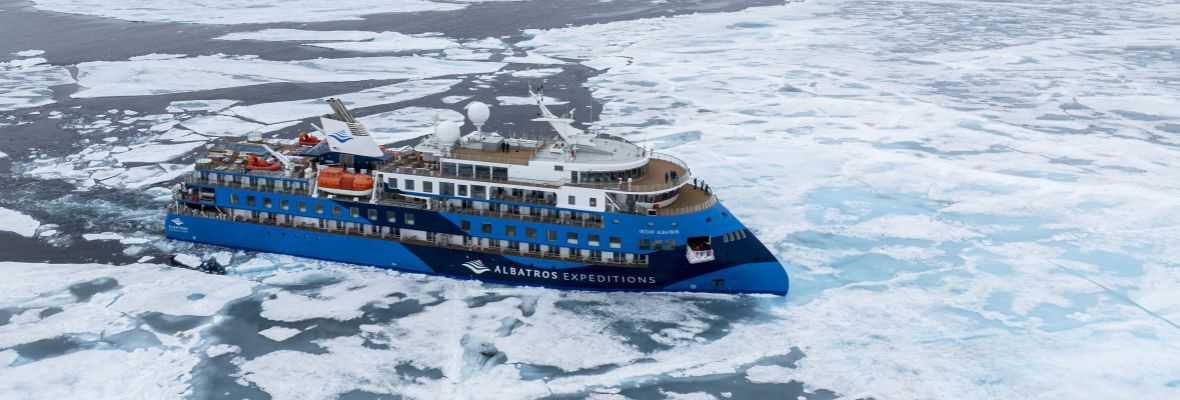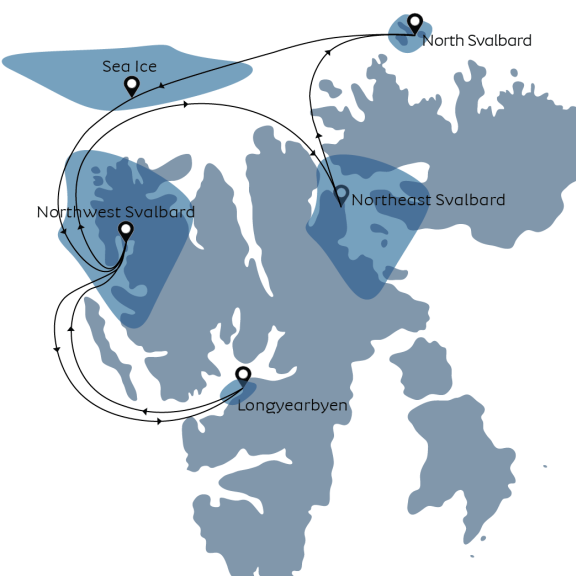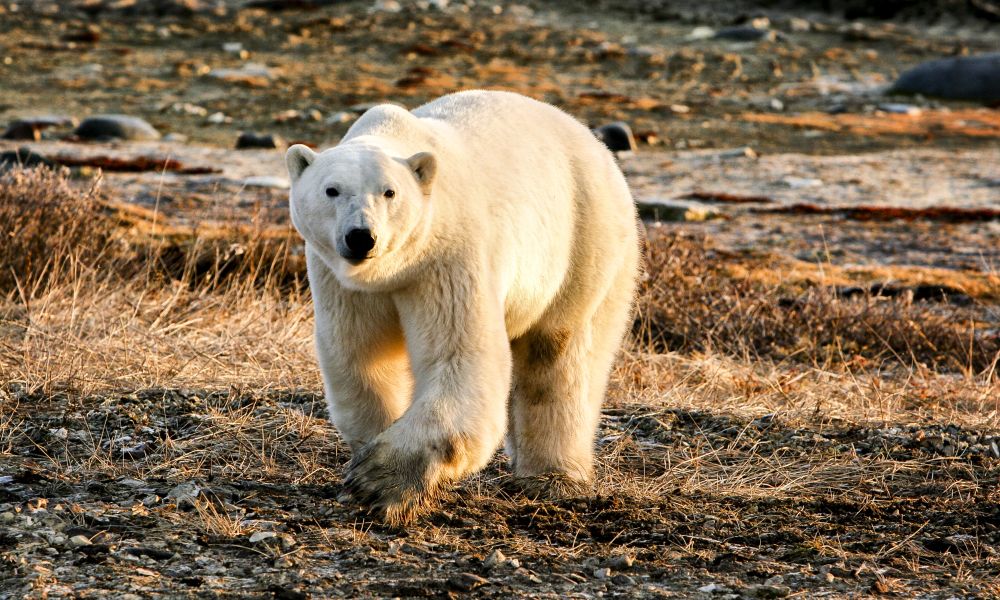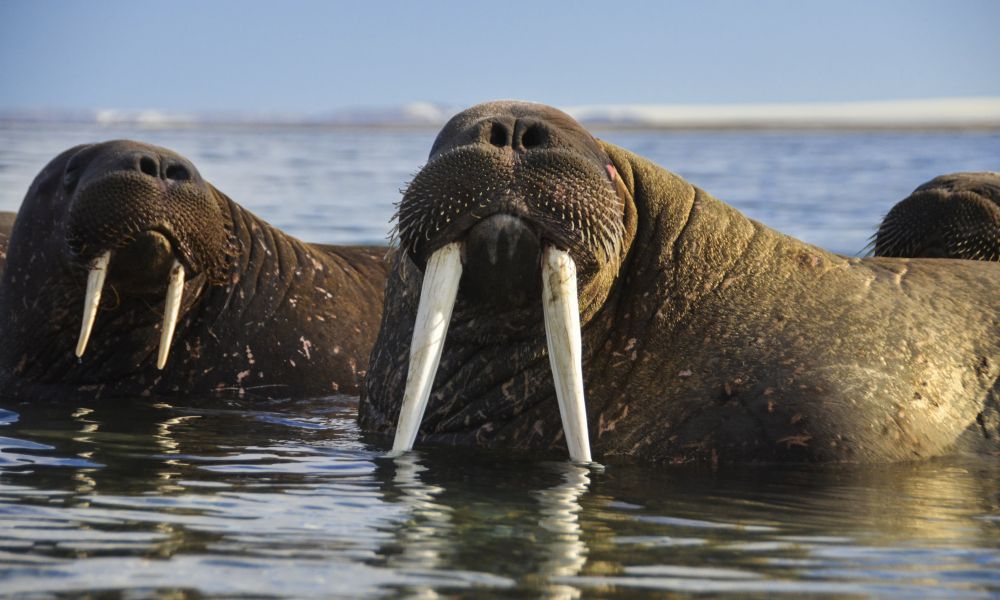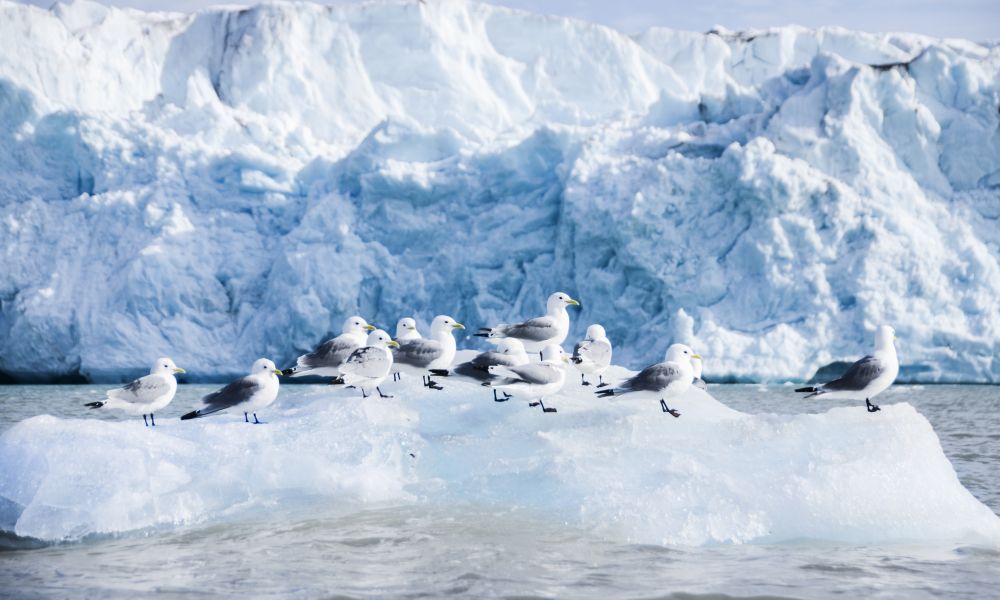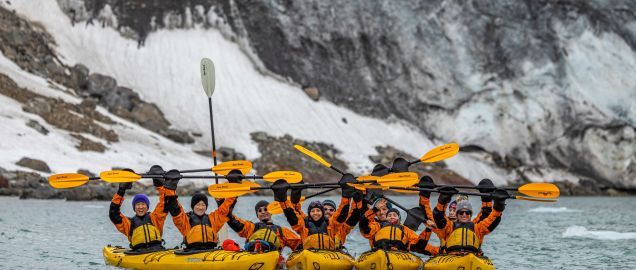Exciting changes are on the way!
As part of our merger with Polar Latitudes, we’re refreshing key elements of our website to reflect this new chapter. Discover more in our latest news update.
Enjoy the immense beauty of Svalbard on this Arctic adventure cruise among whales, walruses, polar bears and millions of sea birds. Experience high summer in the Arctic with Ocean Albatros - one of the few ice-class expedition ships built to withstand the polar pack ice.
Experience the magic of Svalbard, nature's high-Arctic paradise. Experience jaw-dropping natural beauty, keep watch for charismatic Arctic wildlife, and discover the fascinating history of this incredible archipelago. Exploring on land, we will aim to experience the Arctic up close and personal, while another goal of this Albatros expedition is to sail as close as possible to the pack ice north of Svalbard - the polar bear´s favourite summer residence. How far north we reach and the exact route will depend on the ice conditions. Additionally, we will visit several fantastic locations along the west coast of Svalbard, all kept navigable by the warm Gulf Stream.
During the short summer, wildlife such as reindeer and polar foxes are busy amassing energy for the icy polar winter. The cliffs shimmer with life as every surface is populated with countless birds, and in a few months, a new generation of Arctic sea birds are ready to leave their nests. Arctic guillemots, black guillemots and razorbills can be observed fishing in our ship's wake. On the sandy shores, huge walruses enjoy the short Arctic summer, and many whales and seals forage along the edge of the pack ice and the coasts.
With a fleet of sturdy Zodiac boats, we can view wildlife in close proximity. The Zodiacs allow us to have frequent shore landings and embark on exploratory mini cruises in the fjords and glacial landscapes - with no area off limits. The exact route of our expedition will rely on local wind, sea and ice conditions, and your knowledgeable Expedition Leader will work hard to create the best possible itinerary. Join a true Arctic expedition; experience with us!
Please note that the exact routing of the voyage is subject to change due to wind, sea and ice conditions.
Facts about Svalbard - Last stop before the North Pole
- Arctic
- Svalbard
- Norway



